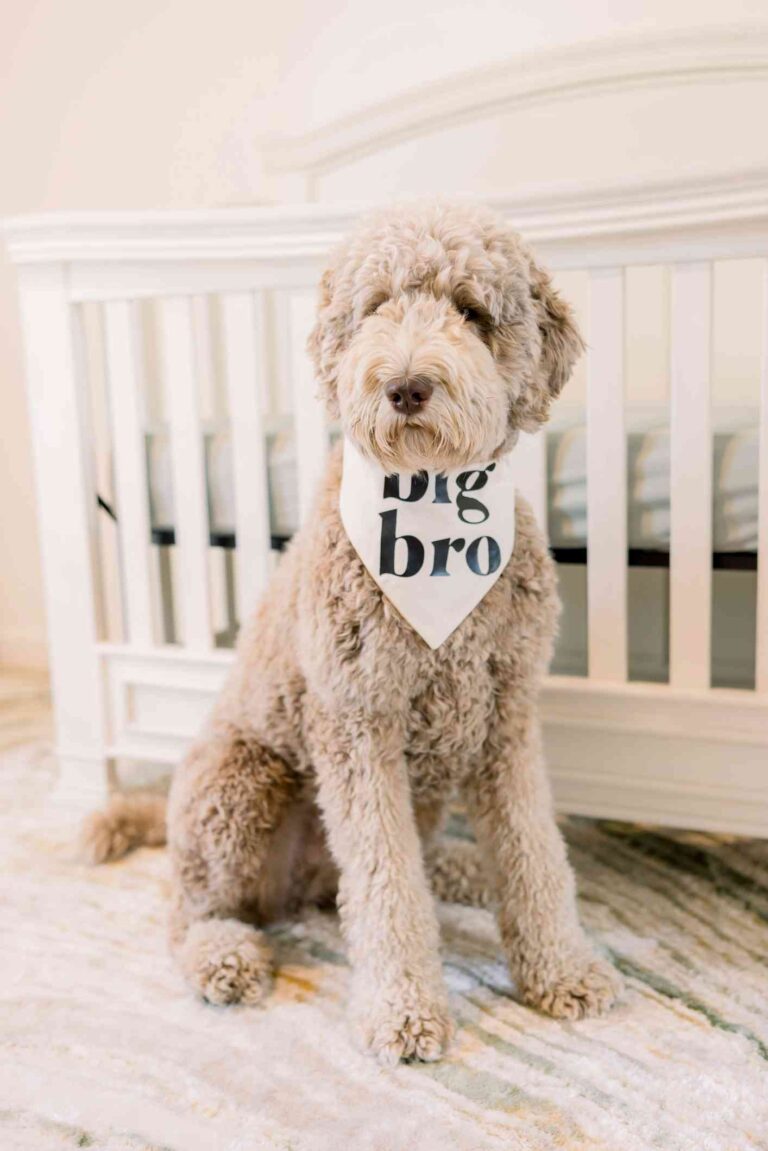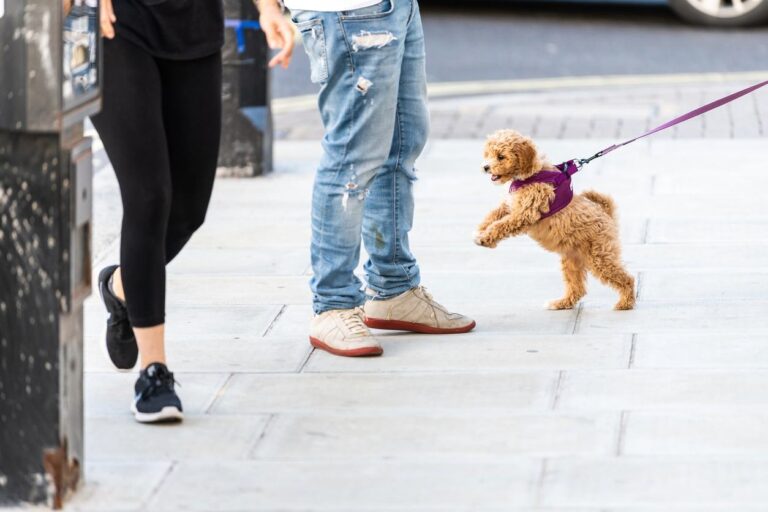It’s always a joyful and life-changing experience when welcoming a baby into your home. It can also be a big adjustment for your dog, filled with unfamiliar noises, sights, and changes in routine. To help your dog feel comfortable and secure, we have created a guide on preparing your dog for the baby’s arrival.
Step one: Preparing the house’s layout before the baby’s arrival
When planning your room, it’s important to consider the baby essentials you need and your house’s layout. After you’ve set up the baby furniture, set some boundaries for your dog. For instance, you might set up a crib and a rocking chair as part of the nursery. Spend time in the nursery room with your dog and let them know what is off-limits. If your dog attempts to jump on the rocking chair, gently correct their behavior. If you plan to keep your dog out of the nursery, practice being in that room with the door closed. You may want to install baby or dog gates to keep your dog out of other baby-only zones.
If your dog sleeps in your bedroom, consider giving them a different sleeping space before the baby arrives. Your dog may not appreciate the many night interruptions that a newborn brings, or they might simply need time to adjust to a new sibling in the house. Either way, it is safest to have your dog sleep elsewhere at first. Set up their new area with their favorite toys, blanket, and bed and practice shutting your bedroom door at night and periodically in the day. The earlier you introduce this change, the easier it will be for your dog to adjust.
Step two: Familiarize your dog with the baby’s toys and sounds with pairing exercises
Now that your home is set up, you should introduce your dog to the new sights and sounds that will soon become part of your daily life. Gradually expose your dog to items such as noisy toys, baby swings, and strollers. Exposing them gradually gives your dog time to feel comfortable and better prepared for your baby’s arrival.
The best exercise to get your dog used to the new sights and sounds is “pairing.” In this exercise, you associate something your dog finds unsettling (such as the rocking of a chair) with something they enjoy, such as a tasty treat.
If your dog shows signs of discomfort, such as tucking its tail or stiffening its body, it’s an indication that it may need regular pairing sessions a few times a week. If your dog is scared by the rocking of a chair, you could rock the chair five times and give your dog a treat each time. Over time, your dog will generalize the treatment and not be scared of the unfamiliar movement and sound.
You can prepare your dog for baby noises through YouTube videos.
- Find a video of a baby making sounds and play it near your dog.
- If your dog notices the sound, give them a treat.
- If your dog continues to be interested in the noise and looks at the phone, tilts their head, tucks their tail, or runs away, then you should give your dog a treat.
- Show your dog the video at least a few times daily and feed at a high rate. As they settle in and start to ignore the noise, you can feed them at a slower rate.
Step three: Pairing with your baby
The final step in preparing your dog for the baby’s arrival. Once you are ready for your dog to meet your baby, follow the following steps:
- Have your dog on a leash and have treats ready. We recommend having a treat bag.
- Have your baby in the same room and wait until your dog notices your baby. When your dog notices the baby, give your dog a treat.
- While your dog is on a leash, approach the baby slowly, and continue giving treats to your dog as they stay interested in the baby.
- If you see your dog raising its tail, pinning its ears back, tucking its tail, and becoming stiff, do not approach the baby. Instead, gently guide the dog away. Start by doing a pairing exercise from a further distance and gradually work your way closer over the next week.
Continue using treats to help your dog build positive associations with anything related to the baby. Regular pairing exercises will make your dog feel more at ease and help them understand what’s expected as things change.
We’re here to help
If you have any questions about preparing your dog for the baby’s arrival, teaching obedience commands, or addressing behavioral issues, including separation anxiety or reactivity, you can schedule a free consultation with our Pet Behavior Team. We offer personalized training programs through one-on-one sessions in your home and neighborhood.
If you prefer to connect virtually or if you live outside our service area, our co-founder and Certified Applied Animal Behaviorist, Dr. Echterling-Savage, provides Virtual Consultation programs. During these programs, she will develop a training plan that meets your specific training goals.




